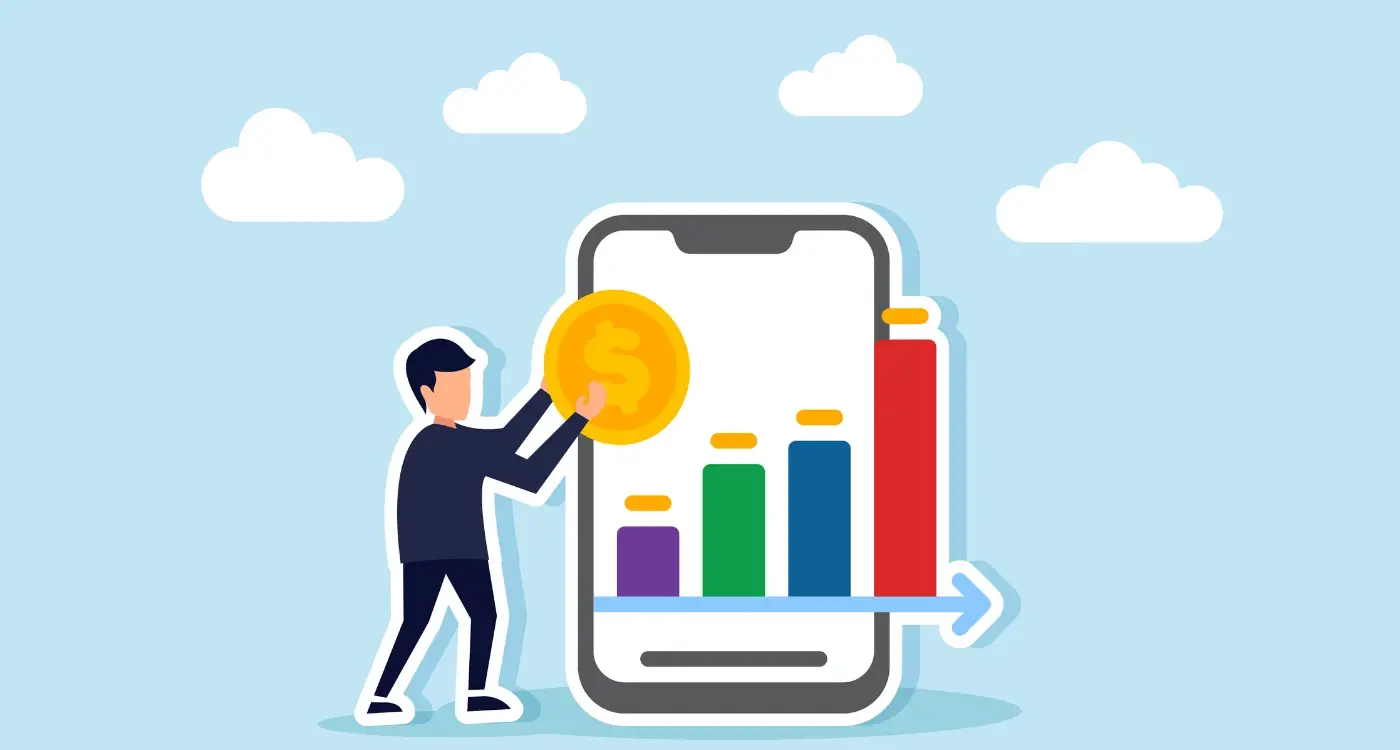How Do You Position Apps When Reviews Are Your Weakness?
App reviews can make or break your mobile application—and when they're working against you, it feels like fighting an uphill battle with one hand tied behind your back. I've seen brilliant apps with solid functionality struggle to gain traction simply because their review scores tell a different story than their actual capabilities.
The harsh reality? Users make snap decisions based on star ratings and a quick scan of recent reviews. They don't dig deeper into the technical details or consider whether negative feedback reflects outdated issues you've already fixed. One bad week can haunt your app for months, even after you've addressed every legitimate concern raised by users.
But here's what I've learned after helping dozens of apps recover from review disasters: poor ratings aren't a death sentence. They're actually an opportunity to demonstrate genuine improvement and build stronger relationships with your user base. The apps that bounce back strongest are usually the ones that faced their review problems head-on rather than trying to hide from them.
The difference between apps that recover and those that don't isn't the severity of their review problems—it's how strategically they approach the comeback.
This guide walks you through the exact positioning strategies I use with clients when reviews become their biggest weakness. We'll cover everything from immediate damage control to long-term reputation rebuilding, because honestly? Your app's future success depends on getting this right. And the sooner you start, the faster you can turn those red stars into green growth.
Understanding Why Reviews Go Wrong
After building apps for nearly a decade, I've seen plenty of review disasters—and honestly, most of them could have been avoided. The thing is, bad reviews rarely happen overnight. They're usually the result of several issues that compound over time, creating a perfect storm of user frustration.
The biggest culprit? Mismatched expectations. I can't tell you how many times I've seen apps that promise the world in their marketing but deliver something completely different. Users download expecting one thing, get another, and boom—one-star review with a scathing comment about false advertising. It's like ordering fish and chips and getting a salad instead.
The Most Common Review Killers
- Technical issues at launch - Crashes, slow loading times, or broken features
- Poor onboarding - Users can't figure out how to use your app within the first 30 seconds
- Overpromising in marketing - Your app store description doesn't match reality
- Ignoring user feedback - Not responding to complaints or feature requests
- Surprise costs - Hidden fees or unexpected subscription requirements
- Lack of clear value - Users don't understand why they need your app
But here's what's really interesting—sometimes good apps get bad reviews for reasons that have nothing to do with the app itself. A user might be having a terrible day, or they downloaded your fitness app expecting it to be free when its clearly a premium product. These situations are harder to prevent, but they're part of the game.
The key is identifying which type of bad review you're dealing with. Are they legitimate complaints about real problems, or are they based on misunderstandings? Because your response strategy needs to be completely different depending on the answer.
The Psychology Behind User Review Behaviour
Right, let's talk about what's actually going on in people's heads when they leave app reviews. I've spent years watching review patterns, and honestly? Most developers get this completely wrong. They think reviews are about their app's features or performance—but that's only part of the story.
The truth is, people don't review apps when they're happy. They review when they're emotional. Happy users just... use your app and get on with their lives. But frustrated users? They've got energy to burn, and your review section becomes their outlet. It's a bit mad really, but understanding this changes everything about how you approach reputation management.
Here's what triggers most negative reviews: unmet expectations, not actual bugs. Someone downloads your fitness app expecting it to work like their mate's premium tracker, but yours is designed for beginners. Technically, there's nothing wrong with your app—but their expectation was wrong from the start.
The Four Types of App Reviewers
- The Venter - Had a bad day, your app crashed once, now you're getting 1 star
- The Comparer - Always measuring against other apps they've used
- The Helper - Genuinely wants to give useful feedback (rare but gold)
- The Perfectionist - Nothing's ever quite right for them
Another thing—timing matters massively. Reviews left within the first 24 hours are usually more positive because users are still in that "new app excitement" phase. After a week? That's when reality sets in and the critical reviews start flowing.
What really gets me is how much context matters. A 3-star review that says "good but could be better" hits differently than one that says "crashes constantly". Same rating, completely different user experience. This is why positioning strategy isn't just about getting more stars—it's about understanding the story your reviews tell.
Track when your negative reviews come in relative to download dates. If most happen within 48 hours, it's an onboarding problem. If they come after a week or more, look at your core functionality.
Audit Your Current Review Situation
Right, let's get our hands dirty and actually look at what we're dealing with. You can't fix what you don't understand, and most app owners I work with have never properly analysed their review data—they just know it "feels bad" when they check the App Store.
Start by pulling your reviews from the last six months across both iOS and Android. Don't just look at the star ratings; that's only half the story. Read through them properly. I know it stings, but you need to see patterns that aren't obvious from a quick glance.
Key Areas to Examine
Look for recurring themes in negative reviews. Are people complaining about the same features? Is the onboarding process confusing users? Are there technical issues you didn't know existed? One app I worked on had dozens of one-star reviews mentioning "crashes during checkout"—something that never appeared in our internal testing but was happening on specific Android devices.
Pay attention to the language users employ. Are they frustrated with the app itself, or disappointed that it doesn't match what they expected? There's a big difference between "this app is broken" and "this isn't what I thought it would do."
Review Distribution Analysis
- Calculate your percentage of 1-2 star reviews vs 4-5 star reviews
- Check if negative reviews cluster around specific app updates
- Note whether complaints focus on functionality, performance, or expectations
- Identify which features get mentioned most in negative feedback
- Track response rates—how many reviews go unanswered?
This audit isn't about beating yourself up. It's about gathering intelligence so you can make smart decisions about where to focus your efforts. Once you know exactly what's wrong, you can start fixing it properly.
Quick Wins to Stop the Bleeding
Right, let's get straight to the point—when your app reviews are tanking, you need to act fast. I've seen apps go from 4.5 stars to 2.8 in just a few weeks, and honestly? It's painful to watch. But here's what I tell every client who finds themselves in this situation: panic won't fix anything, but smart action will.
First thing you need to do is stop the source of new negative reviews. Check your app's crash analytics immediately—are users experiencing bugs that weren't there before? Fix the critical ones first, the ones that stop people using your app entirely. I mean, there's no point trying to improve your positioning if your app doesn't actually work properly.
Address the Vocal Minority
Now, here's something most people don't realise: usually it's just a small group of users causing the biggest noise. Look at your recent reviews and identify the common complaints. Are they all saying the same thing? Good—that means its fixable. Create a simple update that addresses these specific issues and push it out as quickly as possible.
The fastest way to stop negative reviews isn't to ask for positive ones—it's to eliminate the reasons people leave negative ones in the first place.
While you're fixing the technical stuff, respond to recent negative reviews professionally. Don't get defensive (I know it's tempting), just acknowledge the problem and mention that you're working on a solution. Users actually appreciate when developers engage with their feedback—it shows you care about their experience, not just their money.
Sometimes you need to step back and look at what your app actually offers versus what people think it offers. I've seen apps with terrible reviews that were actually brilliant pieces of software—they just weren't explaining their value properly. When your reviews are dragging you down, repositioning your value proposition can be the lifeline you need.
First thing to understand: your value proposition isn't just what your app does, its what problem it solves for users. If you're getting hammered in reviews because people expected something different, that's often a positioning problem, not a product problem. I've worked with apps that marketed themselves as "the fastest photo editor" when they should have been positioning as "professional editing made simple". The difference in user expectations? Massive.
Finding Your True Strengths
Look at your positive reviews—what are people actually praising? Sometimes the features users love most aren't the ones you thought were your main selling points. I remember one client who kept pushing their app's speed in marketing, but users kept raving about how intuitive the interface was. Once we shifted the messaging to focus on ease of use rather than performance, the quality of new users improved dramatically.
Testing New Positioning
You don't need to rebrand overnight. Start small—test different value propositions in your app store descriptions, update your onboarding flow to set better expectations, and see how it affects new user satisfaction. Even changing your app's subtitle can attract users who are better aligned with what you actually deliver. The goal is to attract people who will genuinely benefit from your app, rather than casting the widest possible net and disappointing half your downloads.
Building a Review Recovery System
Right, so you've stopped the bleeding and started making some quick improvements. Now it's time to build a proper system that actually works long-term. I mean, you cant just hope things get better on their own—you need a proper strategy that tackles this head-on.
The thing about review recovery is that its not just about getting more five-star reviews (though that helps, obviously). You need to create a system that consistently delivers better experiences and captures feedback at the right moments. Most apps I work with make the mistake of only asking for reviews when users are about to delete the app. Mental, really.
Setting Up Your Review Monitoring System
First things first—you need to know what people are actually saying about your app. Set up alerts for new reviews across all platforms and respond within 24 hours. Quick responses show you care, and other users notice this stuff. Trust me on this one.
Track your review velocity (how many reviews you get per week) alongside your response time. Users are more likely to leave positive reviews when they see active developer engagement with existing feedback.
Here's what your recovery system should include:
- Daily review monitoring across App Store and Google Play
- Automated alerts for reviews below 3 stars
- Response templates for common complaints
- In-app feedback collection before users reach the stores
- Follow-up system for users who report issues
- Monthly analysis of review trends and themes
Creating Your Response Strategy
When responding to negative reviews, acknowledge the specific issue, apologise genuinely, and offer a solution. Don't be defensive—I've seen developers argue with users in review responses and it never ends well. Keep responses professional but human; nobody wants to read corporate speak when they're frustrated with your app.
The goal isn't just damage control—its showing potential users that you actually give a damn about fixing problems when they arise.
Managing User Expectations and Communication
Here's the thing about poor reviews—they're often not about your actual app. They're about the gap between what users expected and what they got. I've seen brilliant apps get hammered with one-star reviews simply because users thought it would do something completely different.
The solution? Be brutally honest about what your app does and doesn't do. Your app store description should feel like a conversation with a mate, not a marketing brochure. If your fitness app only tracks running, don't hint that it might do cycling too. Users will find out, and they'll be annoyed about it.
Setting Clear Boundaries From Day One
Your onboarding process is where expectations get cemented. Use those first few screens to show exactly what users can achieve and—this is key—what they can't. I always tell clients to include a "what this app won't do" section somewhere early on. It sounds counterintuitive, but it actually increases satisfaction.
When users hit problems (and they will), your response matters more than the problem itself. Set up automated responses for common issues, but make them personal. "We know the login thing is frustrating—here's how to fix it in 30 seconds" works better than generic corporate speak.
Proactive Communication Strategies
Don't wait for users to complain. Use in-app messaging to address known issues before they become review complaints:
- Send push notifications about upcoming maintenance windows
- Explain why certain features work the way they do
- Offer quick tutorials when users seem stuck
- Acknowledge limitations openly and explain your roadmap
- Create FAQ sections that actually answer real user questions
The apps that recover from review disasters are usually the ones that start treating their users like intelligent humans who deserve honest communication. It's not rocket science, but you'd be surprised how many developers still try to oversell and under-deliver.
Long-term Reputation Rebuilding Strategies
Right, let's talk about the bigger picture here. You've stopped the bleeding, you've got your systems in place—now its time to think about the long game. Reputation rebuilding isn't something that happens overnight; it takes months, sometimes years to fully turn things around.
The most effective strategy I've seen work time and again is what I call the "compound improvement" approach. Instead of trying to fix everything at once, you focus on making small, measurable improvements every single month. Maybe that's reducing your crash rate by 10%, improving your response time to reviews by half, or adding one genuinely useful feature that users have been asking for.
Building Social Proof Beyond App Stores
Here's something most people overlook—your app store reviews don't exist in a vacuum. Users are researching your app on social media, reading blog posts, watching YouTube reviews. Start building your reputation in these spaces too. Get your app reviewed by influencers in your industry, create case studies showing real user success stories, and maintain an active presence on platforms where your users spend time.
The best reputation rebuilding strategy is to become genuinely worthy of a good reputation, then make sure people know about it
I always tell clients that reputation management is really just consistent execution over time. You can't shortcut your way to trust—you have to earn it back, one user at a time. The good news? Once you start building momentum, it becomes much easier to maintain. Users start defending your app in reviews, sharing positive experiences, and your improved ratings create a virtuous cycle that attracts better quality users who are more likely to leave constructive feedback.
Conclusion
Look, I'm not going to sugar-coat this—recovering from poor reviews isn't a quick fix. It takes time, patience, and genuine commitment to making your app better. But here's what I've learned after years of helping clients through this exact situation: it's absolutely possible to turn things around.
The apps that successfully recover from review disasters all share one thing in common—they stopped making excuses and started making real changes. They didn't just tweak their marketing messages or add flashy new features. They went back to basics and fixed the fundamental problems that were driving users away in the first place.
Your review score might be stuck at 2.3 stars right now, but that doesn't define your app's future. I've seen apps climb from the depths of review hell to become category leaders. The difference? Their teams understood that reviews are just symptoms—not the disease itself.
The strategies we've covered aren't theoretical nonsense; they're battle-tested approaches that work when applied consistently. Start with the quick wins to stop further damage, then focus on the long-term reputation rebuilding. Most importantly, remember that every negative review is actually valuable feedback from someone who cared enough to download your app in the first place.
Your app's reputation isn't permanently damaged—it's just temporarily bruised. With the right approach and enough persistence, you can turn your biggest weakness into proof of how much you care about your users. That's the kind of story that builds lasting success in the app store.
Share this
Subscribe To Our Learning Centre
You May Also Like
These Related Guides

How Do You Highlight Benefits Without Attacking Rivals?

How Do You Position Against Apps With Larger Marketing Budgets?



